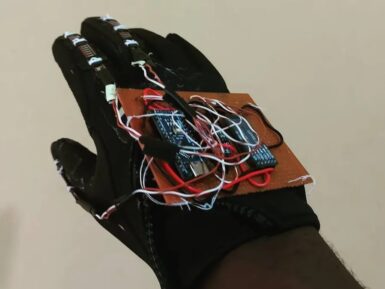
Overview
The MKR THERM Shield allows a board of the MKR family to acquire temperatures from a thermocouple of type K and a DS18Bxx digital one wire sensor. The Thermocouple is a kind of temperature sensor that offers high accuracy and a wide range of measured temperatures. Its analog nature requires specific interfacing and this shield relies on the MAX31855 thermocouple digital interface.
The two connectors of the MKR THERM Shield allow the usage of Type K thermocouples with or without a plug attached to the metal wires.
The MKR THERM Shield has its own library to read the temperature measured by the thermocouple. You may find further details and a usage example in our Getting Started page.
Tech specs
| Connectors |
K TYPE DALLAS DS18S20 (to solder) Screw terminal block |
| Input Voltage | 3.3V |
| Operating Voltage | 3.3V |
| Operating Temperature | -200°C + 700°C |
| Communication | SPI/1Wire |
| IC | MAX31855 |
| Length | 61 mm |
| Width | 25 mm |
| Weight | 32 gr. |
Conformities
Resources for Safety and Products
Manufacturer Information
The production information includes the address and related details of the product manufacturer.
Arduino S.r.l.
Via Andrea Appiani, 25
Monza, MB, IT, 20900
https://www.arduino.cc/
Responsible Person in the EU
An EU-based economic operator who ensures the product's compliance with the required regulations.
Arduino S.r.l.
Via Andrea Appiani, 25
Monza, MB, IT, 20900
Phone: +39 0113157477
Email: support@arduino.cc
Documentation
OSH: Schematics
The Arduino MKR Therm Sheld is open-source hardware! You can build your own board using the following files:
EAGLE FILES IN .ZIP SCHEMATICS IN .PDFLearn more
Get Inspired
A quick tutorial on how to interface the voice recognition module with few examples.

For people not familiar with American Sign Language (ASL), being able to recognize what certain hand motions and positions mean is a nearly impossible task. To make this process easier, Hackster.io user ayooluwa98 came up with the idea to integrate various motion, resistive, and touch sensors into a single glove that could convert these signals into understandable text and speech. The system is based around a single Arduino Nano board, which is responsible for taking in sensor data and outputting the phrase that best matches the inputs. The orientation of the hand is ascertained by reading values from the X, Y, and Z axes of a single accelerometer and applying a small change based upon prior calibration. Meanwhile, resistive flex sensors spanning the length of each finger produce a different voltage level according to the bend’s extent. At each iteration of the program’s main loop, a series of Boolean statements are evaluated to pick the phrase that best matches the current finger bends and hand orientation, and this data is then outputted via the UART pins to an attached Bluetooth® HC-05 module. The final component is a connected phone running a custom app that takes the incoming words from Bluetooth® and saves them for text-to-speech output when the button is pressed. To see more about this project, you can read ayooluwa98’s write-up here on Hackster.io.








